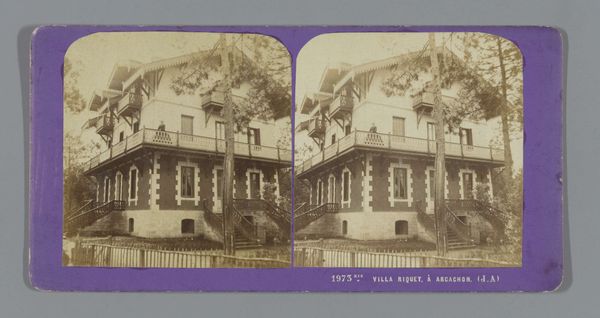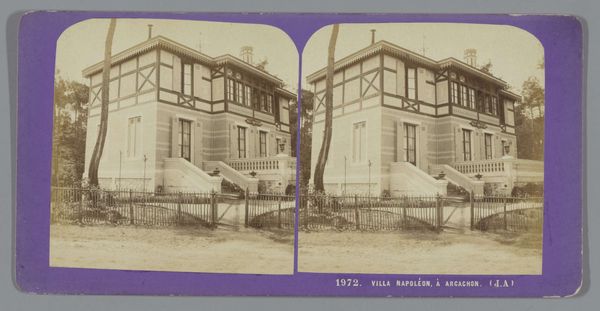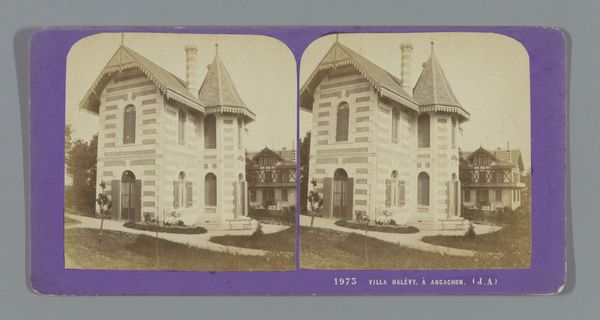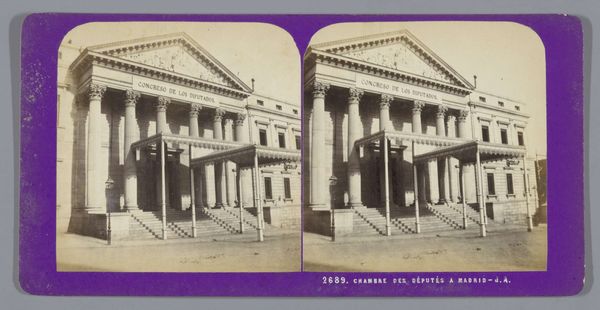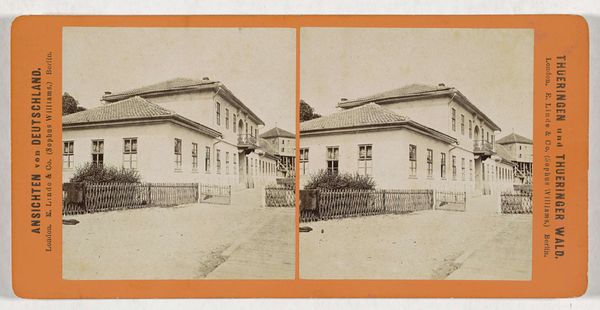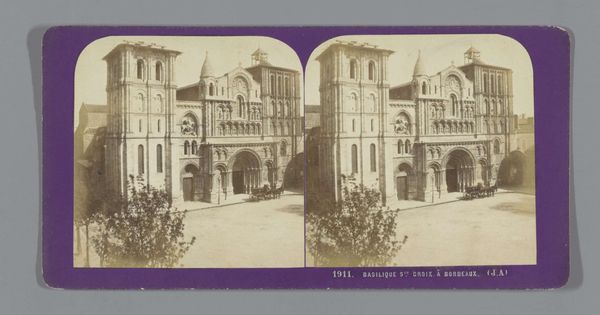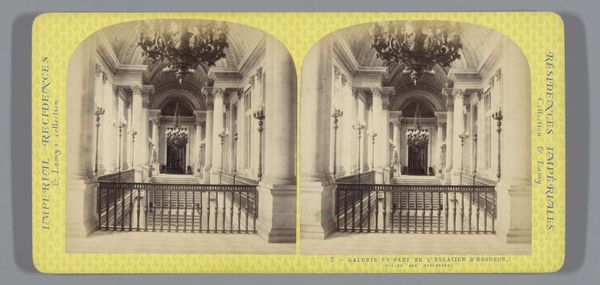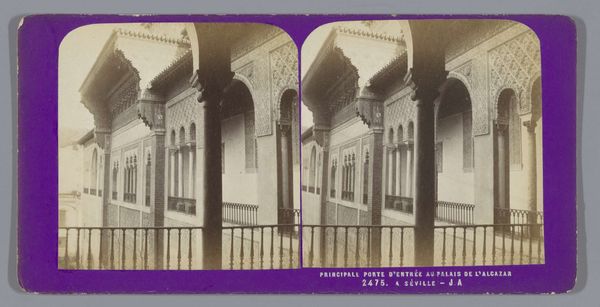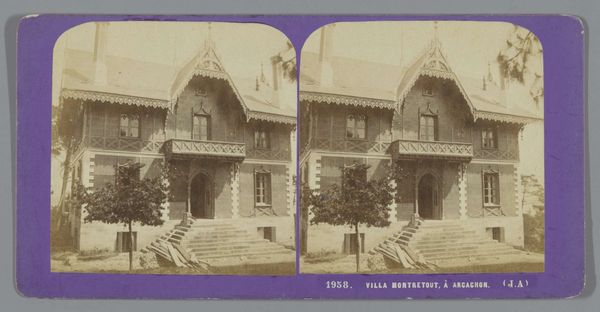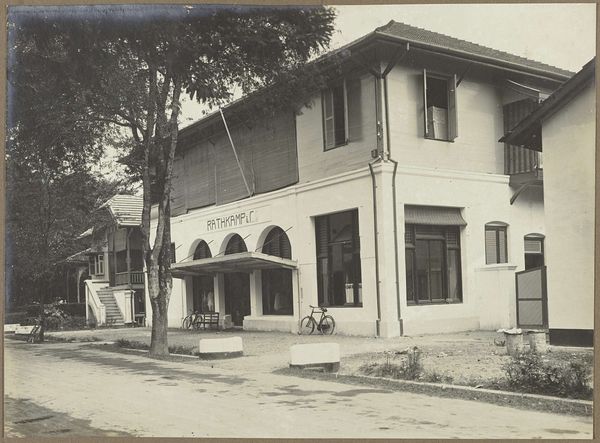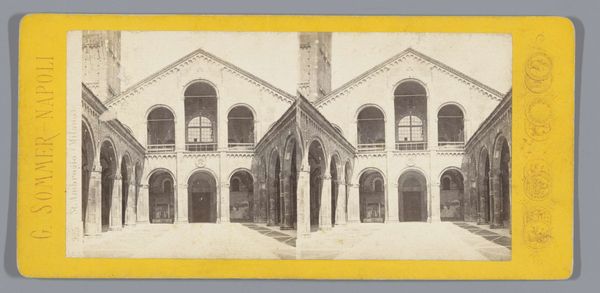
print, photography, gelatin-silver-print
# print
#
street-photography
#
photography
#
orientalism
#
gelatin-silver-print
#
cityscape
#
building
Dimensions: height 85 mm, width 170 mm
Copyright: Rijks Museum: Open Domain
Curator: This gelatin-silver print captures the facade of the Palacio de Xifré in Madrid, dating from the period between 1862 and 1876, the work of Jean Andrieu. It immediately strikes me how this building feels like a cultural palimpsest. Editor: Absolutely. The architecture’s overt exoticism reads today as both fascinating and problematic. What stories are told, and perhaps obscured, by this visual performance of “the Orient”? Curator: The very phrase "Orientalism," Edward Said's concept, hangs heavy here, doesn’t it? It brings into sharp focus the complexities of cross-cultural appropriation. Note the architectural details -- the horseshoe arches, the geometric patterns. They seem to suggest an ideal, a romantic vision. Editor: It begs the question, whose vision is being realized? Was this designed as a place of genuine intercultural exchange or, more cynically, to create a space to project power and fantasy? Who inhabits this vision, and at what cost to authentic cultural identities? Curator: Certainly, buildings often carry within them symbolic intentions beyond pure function. The question I always come back to is what collective memory did these symbols evoke in people, and did the evocation carry an emotional impact? Editor: Well, I imagine for some it evoked a sense of wonder and access to “exotic” aesthetics; however, viewed through today’s lens, it can easily be interpreted as contributing to the flattening and commodification of diverse cultures, thus aiding and abetting various systems of oppression. Curator: So, are we forever bound to reinterpret the symbols, even as their original impact and usage evolve with societal transformation? Editor: Precisely. The photograph itself acts as evidence—a frozen moment that nonetheless participates in ever-shifting cultural and political dialogues. Understanding these layered histories is essential. Curator: Indeed, this journey reminds me that meaning lies not just within an object but within the dialogue it invites. Editor: Yes, it is the art's context, layered as it might be, that holds space for critical introspection on representation and power.
Comments
No comments
Be the first to comment and join the conversation on the ultimate creative platform.
